Dust Suppression – Our Social License to Operate May Be At Risk

Posted on a public bulletin board in Southern Alberta, this note may be a sign of regulations to come if we don’t take action now cautions Leighton Kolk of Kolk Farms Ltd. near Iron Springs, AB, who found the note. “Excessive dust affects more than the neighbours; dust can cause health issues for both cattle and worker as well,” says Kolk.
Kolk points out that dust suppression is not currently regulated in Canada, but our neighbours to the south have severe regulations to follow in order to avoid fines and even operation limitations. Washington feedlot operator and Washington Cattle Feeders’ Board member Bill Easterday said: “We realized that almost all of our local dust regulations are a result of complaints and we realized that air quality regulation is here to stay and that we needed to be proactive, not reactive.”
Currently, the Natural Resources Conservation Board of Canada (NRCB)’s Compliance and Enforcement operational policy emphasizes “education and voluntary compliance as the first and preferred approach to bringing an operation into compliance with the act or conditions attached to the operation’s permit.” They state that “If there is an immediate risk to the environment, the inspector may issue an emergency order. In rare circumstances the inspector may initiate prosecution, if required.”
“If we work as an industry to voluntarily reduce dust proactively, it will be much better than a costly legislated law put into place by authorities,” adds Kolk.
Dust suppression doesn’t have to be costly or labour intensive; there are several management practices that can reduce dust without significant resources.
It is recommended to focus on the pens themselves first. Cattle moving around as the day cools is generally the largest cause of dust movement. In pens, the most common dust management tactics are:
Pen Maintenance
- Scraping pens regularly reduces manure and excess feed that get ground into fine dust.
- It is recommended to leave 1-2 inch surface layer of compacted soil/manure.
- Alberta Ag and Forestry states: “The removal of accumulated manure, bedding and deteriorated pen base is the most effective approach to managing pen dust.”
Water Application
- Applying water should being in advance of dust becoming an issue.
- Maintain a balance between dust control and creating mud.
- The surface manure in the lot should be maintained at 25-35 percent water to minimize the dust and odours.
- It is recommended to water in the evening.
- *In California research, properly sprinkled feedlots generated up to 18 times less dust than untreated lots.*
Animal Density
- Concentrating animals in the pen can limit dust by increasing the moisture level in the pen from manure and urine.
- However, there can be issues such as:
- inadequate bunk space,
- possible increased disease transmission,
- possible lower gains, and
- if weather conditions change, mud could become an issue.
External to the pens, maintaining roadways and increasing shelterbelts and protective treelines can also contribute to dust reduction in the pens and yard.
For more details or specific management strategies, please use these resources:
Alberta Ag and Forestry: Managing Feedlot Pen Dust
Fugitive Dust Control Plan and Best Management Practices for Cattle Feeding Operations – Washington Cattle Feeders’ Association with the State of Washington Department of Ecology


Trackbacks & Pingbacks
… [Trackback]
[…] Find More to that Topic: cattlefeeders.ca/dust-suppression-our-social-license-to-operate-may-be-at-risk/ […]
… [Trackback]
[…] Read More to that Topic: cattlefeeders.ca/dust-suppression-our-social-license-to-operate-may-be-at-risk/ […]
… [Trackback]
[…] There you can find 46344 more Information on that Topic: cattlefeeders.ca/dust-suppression-our-social-license-to-operate-may-be-at-risk/ […]
… [Trackback]
[…] Find More Information here to that Topic: cattlefeeders.ca/dust-suppression-our-social-license-to-operate-may-be-at-risk/ […]
… [Trackback]
[…] Info on that Topic: cattlefeeders.ca/dust-suppression-our-social-license-to-operate-may-be-at-risk/ […]
… [Trackback]
[…] Here you can find 56287 more Information to that Topic: cattlefeeders.ca/dust-suppression-our-social-license-to-operate-may-be-at-risk/ […]
… [Trackback]
[…] Find More Information here to that Topic: cattlefeeders.ca/dust-suppression-our-social-license-to-operate-may-be-at-risk/ […]
… [Trackback]
[…] Find More on that Topic: cattlefeeders.ca/dust-suppression-our-social-license-to-operate-may-be-at-risk/ […]
… [Trackback]
[…] Info on that Topic: cattlefeeders.ca/dust-suppression-our-social-license-to-operate-may-be-at-risk/ […]
… [Trackback]
[…] There you will find 61248 additional Information on that Topic: cattlefeeders.ca/dust-suppression-our-social-license-to-operate-may-be-at-risk/ […]
… [Trackback]
[…] Information on that Topic: cattlefeeders.ca/dust-suppression-our-social-license-to-operate-may-be-at-risk/ […]
… [Trackback]
[…] Read More here on that Topic: cattlefeeders.ca/dust-suppression-our-social-license-to-operate-may-be-at-risk/ […]
… [Trackback]
[…] There you will find 44801 more Info to that Topic: cattlefeeders.ca/dust-suppression-our-social-license-to-operate-may-be-at-risk/ […]
… [Trackback]
[…] Here you will find 48050 additional Info to that Topic: cattlefeeders.ca/dust-suppression-our-social-license-to-operate-may-be-at-risk/ […]
Comments are closed.